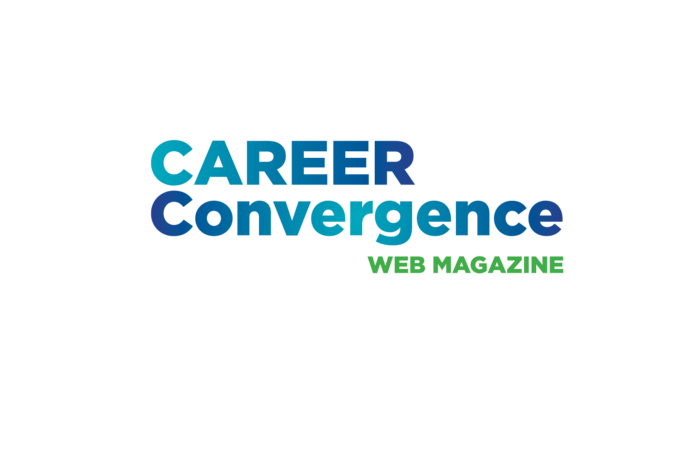10/01/2025
Beyond Accommodations: Universal Design for Everyday Career Practice
By Nulty Lynch
Why Universal Design Matters
As career development professionals, we are called on to work with diverse clients. Clients come to us with various strengths and needs and it is our job to meet the clients at their stage of career development. When a client discloses a disability we often rely on offering accommodations to our existing structures. Accommodations, however, are reactive, case-by-case fixes. Universal Design (UD), on the other hand, is proactive. It means designing practices so they are usable by the widest range of people from the start, without the need for individual adaptation (North Carolina State University, 1997).
The Center for Universal Design at North Carolina State University describes UD as “the design of products and environments to be usable by all people, to the greatest extent possible, without the need for adaptation or specialized design” (North Carolina State University, 1997, para. 1). First applied in architecture, UD principles now influence education, technology, and increasingly, human services (Universal Design Centre, n.d.).
A ramp next to the stairs at the front of a building is perhaps the most familiar example of UD. While originally built to meet Americans with Disabilities Act (ADA) requirements, the ramp benefits not only individuals using wheelchairs or those with other mobility concerns, but also improves access for delivery drivers with hand trucks or parents pushing strollers. This ripple effect, where a design created for some ends up benefiting many, has shifted how accommodations are viewed in other spheres. It invites us to ask during the design process how can we consider the widest range of potential uses and needs, not just the obvious ones? In short: when we design for difference, we design better for everyone (Burgstahler & Russo-Gleicher, 2015; Dwyer et al., 2023).
While this article emphasizes serving the needs of neurodivergent clients (autistic, ADHD, dyslexic, and others), UD thinking also benefits clients with physical disabilities, chronic illness, mental health challenges, language differences, or even temporary conditions like an injury. The practices described here can be implemented to aid everyday career service to all clients.
Intake, Re-Designed
Intake sets the tone for the practitioner-client relationship, but it can also create unnecessary barriers. Neurodivergent clients often arrive carrying the weight of past missteps with systems not designed for them (Dwyer et al., 2023). Looking at intake processes from the perspective of clients’ past experiences can reduce these unseen barriers. Possible simple, but powerful, UD strategies to enhance intake are:
- Provide multiple ways to make contact (phone, email, online form, text, etc.).
- Send a short “what to expect” document before the first meeting. Keep it concrete, e.g., length of session, materials to bring, whether a support person is welcome, and what happens next (National Autistic Society, 2021).
- Allow clients to preview common intake questions so they can prepare.
- Invite clients to share communication preferences (camera on/off, chat vs. voice, written recap, etc.).
These practices replace guesswork about the service with clarity and can reduce stress for all clients, not just those with disabilities (Burgstahler & Russo-Gleicher, 2015).
Environment and Sensory Considerations
Physical and virtual spaces communicate as much as words. Bright lights, background noise, or cluttered visuals can overwhelm some clients. A waiting room or Zoom background that feels distracting or overstimulating can spike anxiety before a session even begins. UD-informed adjustments might include:
- Offering seating options, softer lighting, and reduced background noise.
- Making water available and allowing fidgets or note-taking in any form.
- For virtual sessions: allow cameras to be kept off, encourage the use of chat, and share documents live on screen.
Research has shown that recognizing and accommodating sensory distress improves mental health and access for neurodivergent individuals (Dwyer et al., 2023). These small steps not only help neurodivergent clients regulate sensory input, but they also support clients with migraines, PTSD, or simply a preference for quiet and order.
Communication that Works
Career services depend on communication, yet this is where mismatches often occur. Many clients benefit when career development professionals implement the following communication practices:
- Use direct, concrete language.
- Break complex tasks into smaller steps.
- Offer written recaps of sessions.
- Allow processing time before expecting responses.
Research in higher education shows that providing multiple modalities (oral, written, visual) improves comprehension for students on the autism spectrum and their peers alike (Burgstahler & Russo-Gleicher, 2015). The same applies in career services: flexible communication reaches more clients, more effectively.
Materials that Include Everyone
Think about the forms, worksheets, or guides given to clients. Are they clear, concise, and available in multiple formats? UD principles suggest:
- Providing checklists, templates, and examples in both digital and print versions.
- Using visuals (icons, charts, organizers) alongside text.
- Offering multiple ways to demonstrate progress (mock interview, typed responses, recorded practice).
Inclusive literacy research emphasizes that all students, not just those with disabilities, benefit from varied entry points to content (Tracy-Bronson & Scribner, 2024). Career materials are no different. The more ways clients can engage, the more likely they are to succeed.
Policies that Promote Equity
Policies matter as much as practice. UD encourages the design of policies that reduce barriers before they arise. For career development professionals, that might mean:
- Flexible scheduling with buffer time between sessions.
- Transparent cancellation policies written in plain language.
- Explicit consent before sharing notes or contacting third parties.
- Post-session surveys with simple, plain-language items to invite feedback.
Such policies not only support clients with executive function challenges but also create clarity for every client, reducing misunderstandings and strengthening trust (National Autistic Society, 2021).
From Universal Design to Better Outcomes
Universal Design is not about lowering expectations, it is about raising accessibility. When intake is transparent, environments are predictable, communication is flexible, and materials are accessible, clients engage more fully. They spend less energy navigating barriers and more energy focusing on their career goals.
In the end, UD is simply good practice. It honors the diversity of human experience, anticipates needs before they become problems, and communicates respect for every client. As career development professionals, adopting UD moves us beyond reactive accommodations and into proactive inclusion, an approach that benefits all.
References
Burgstahler, S., & Russo-Gleicher, R. J. (2015). Applying universal design to address the needs of postsecondary students on the autism spectrum. Journal of Postsecondary Education and Disability, 28(2), 199–212. https://files.eric.ed.gov/fulltext/EJ1074670.pdf
Dwyer, P., Mineo, E., Mifsud, K., Lindholm, C., Gurba, A., & Waisman, T. C. (2023). Building neurodiversity-inclusive postsecondary campuses: Recommendations for leaders in higher education. Autism in Adulthood, 5(1), 1–14. https://doi.org/10.1089/aut.2021.0042
National Autistic Society. (2021). Good practice guide for mental health professionals. National Autistic Society. https://s2.chorus-mk.thirdlight.com/file/24/asDKIN9as.klK7easFDsalAzTC/NAS-Good-Practice-Guide-A4.pdf
North Carolina State University, Center for Universal Design. (1997). The principles of universal design. https://design.ncsu.edu/research/center-for-universal-design/
Tracy-Bronson, C. P., & Scribner, S. (2024). Inclusive literacy access for students with autism. International Journal of Whole Schooling, 20(1), 24–40. https://wholeschooling.concordia.ab.ca/Journal_of_Whole_Schooling/articles/20-1%20Bronson%20and%20Scribner.pdf
Universal Design Centre. (n.d.). The 7 principles of universal design. Centre for Excellence in Universal Design. https://universaldesign.ie/about-universal-design/the-7-principles
Nulty Lynch is an English Department Chair and Certified Autism Specialist with more than 15 years of teaching experience in diverse schools. He is participating in training as a Career Services Provider, which could lead to the CCSP credential. As an Autistic educator, advocate, and consultant, he translates lived experience and professional expertise into practical strategies that help career professionals design services that are accessible for all clients. Nulty can be reached at nulty@futureready-u.com or through www.futureready-u.com
2 Comments
Maisie Lynch on Wednesday 10/01/2025 at 12:39 PM
Great job Nulty! This is important in so many fields.
Barbara Bird on Wednesday 10/01/2025 at 01:25 PM
What a useful article for anyone meeting with clients or constituents. Well done



